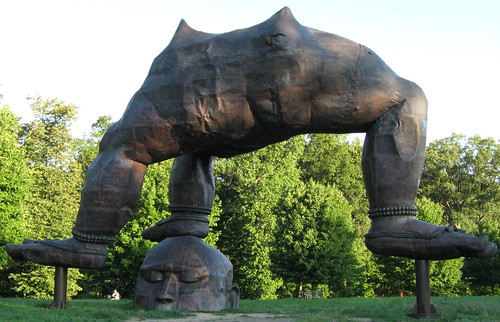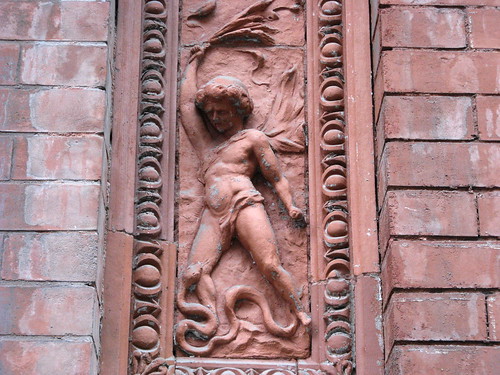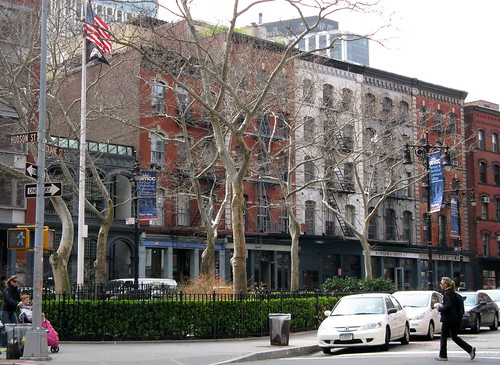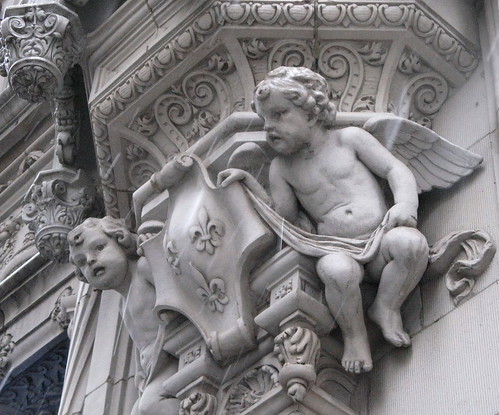Only 10 days after the Union won a decisive victory in the Battle of Gettysburg in July, 1863, the city of New York suffered through its own brutal and bloody violence, amid the streets and buildings. Class, racial, and ethnic tensions had been brewing in New York for decades, finally brought to a head by the issue of the military draft during the Civil War and bursting into open and widespread unrest. During this week of July 147 years ago, the New York Draft Riots exploded for four days, a time of arsons, lynchings, shootings, skirmishes in the street, and attacks on many citizens.
One could scarcely guess that this began at what is now one of Manhattan’s fairly unremarkable busy corners. Today, where Third Avenue and East 46th Street meet is just another bustling Midtown East intersection of banks, stores, and offices. In 1863, at a place called the Provost Marshall’s office where these two streets came together, a disturbance began that set in motion four days of unrest and violence from July 13-16. It became one of the worst episodes of civil disorder ever in the United States.
Many forces collided to create a situation ripe for the unrest that broke out. When the Civil War began, many thousands first united behind the Union and volunteered for the military. Yet as the war dragged into 1863, the United States faced a manpower shortage. In March, 1863, Congress passed the Conscription Act, establishing for the first time ever a federally mandated draft. However, the measure released men who could find a substitute or pay $300 for a waiver, a move that meant the wealthy could afford to avoid the draft. Couple this situation with the already-existing tensions between Irish and African-American workers and the economic hardship that ensued during the early time of the war.
“An Irruption”
Yet no one could have surmised what was coming judging by the first day of the draft, on Saturday, July 11, 1863. It went off peacefully. But then the tenuous peace unraveled on Monday, July 13, a hot, humid day in the city. Officials were set to choose names on the second day of the draft lottery, as they had done on Saturday, at the U.S. Provost Marshall’s Office, at the corner of Third Avenue and 46th Street.
But a large crowd gathering had other intentions. Early that morning, groups of laborers organized together and marched toward the office where the draft would occur. They stopped in various factories and workshops, and compelled others to stop work and join them, various sources reported. German-speaking artisans, native-born Protestants, and Irish laborers walked together, according to Virtual New York, a CUNY Graduate Center project. The crowd included workers from the shipyards, iron foundries, machine shops, and railroad companies. It drew women as well as men.
The groups massed in front of the draft office, and there the rioting began. In the first minutes of the lottery, the sizable crowd inside included hecklers. “Scarcely had two dozen names been called, when a crowd, numbering perhaps 500, suddenly made an irruption in front of the building, (corner of Third-avenue and Forty-sixth-street,) attacking it with clubs, stones, brickbats and other missiles,” the New York Times reported in its July 14, 1863 edition. Many of the rioters rushed into the building, sacking the office and demolishing the lottery wheel and other equipment.
Accounts of the events give a sense of the rage and wildness suddenly unleashed on that hot July morning. As the military officers and a small police detail escaped with their lives, the rioters set the building on fire. One military officer sought to quell and assure the crowd that the draft equipment had all been destroyed, asking people to leave, but the mob beat him with clubs, according to the Times report. The building became engulfed in flames, which spread to adjoining structures on the block. As the unrest exploded, the government suspended the draft late that morning.
An Onslaught of Violence
Consider the emotion that day, hordes of people suddenly gone out of control and the scene at Third Avenue and 46th Street one of chaos and destruction. From this intersection, the mobs, drawing others, branched out and vented their fury on other targets in New York City that day and over the next three days. They especially went after draft personnel, Republican Party supporters, and abolitionists. They cut telegraph wires and pulled up railroad tracks. A mob set fire to Horace Greeley’s pro-Republican New York City Tribune on Park Row.
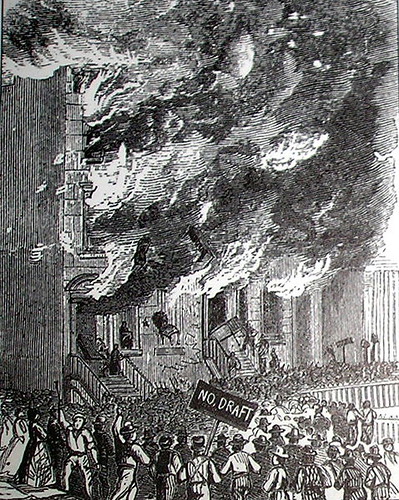
An illustration of a building on fire on New York’s Lexington Avenue during the Draft Riots of 1863. The drawing appeared in William J. Bradley’s The Civil War: Fort Sumter to Appomattox.
African Americans were especially vulnerable. Crowds attacked and beat African-American citizens, in some cases fatally, and ransacked their homes. There were lynchings in the city. A mob ravaged and then set fire to the Orphan Asylum for Colored Children, on Fifth Avenue between 43rd to 44th streets, destroying it.
From that first day of “Infamy and Disgrace,” as the Times called it in a headline, the disturbances went on unchecked. Over the four days, attacks and battles took place in various city neighborhoods. Thousands of federal troops, including some who had fought in Gettysburg, finally restored order on July 16. In the ending confrontations between the troops and rioters, many rioters died.
The riot’s ultimate impact was horrific. The official death toll was 119 people (though others have estimated higher), and hundreds were wounded. Dozens of buildings burned to the ground. Thousands of African Americans fled or were forced out of the city, and some residents formed aid societies to help others stay. Ultimately, the federal government succeeded in holding the draft in New York, in August, 1863. Thus came to a close one of the most violent chapters of civil unrest in American history.

